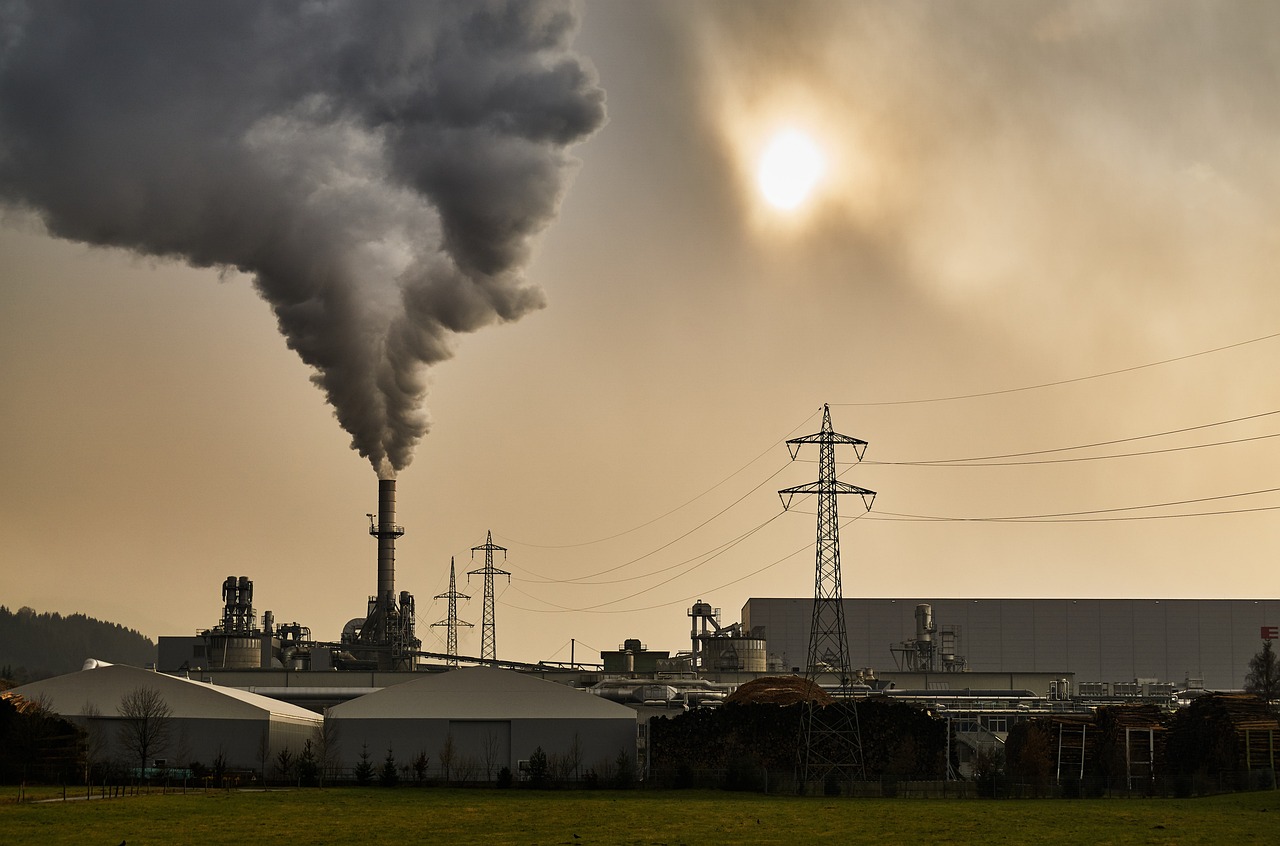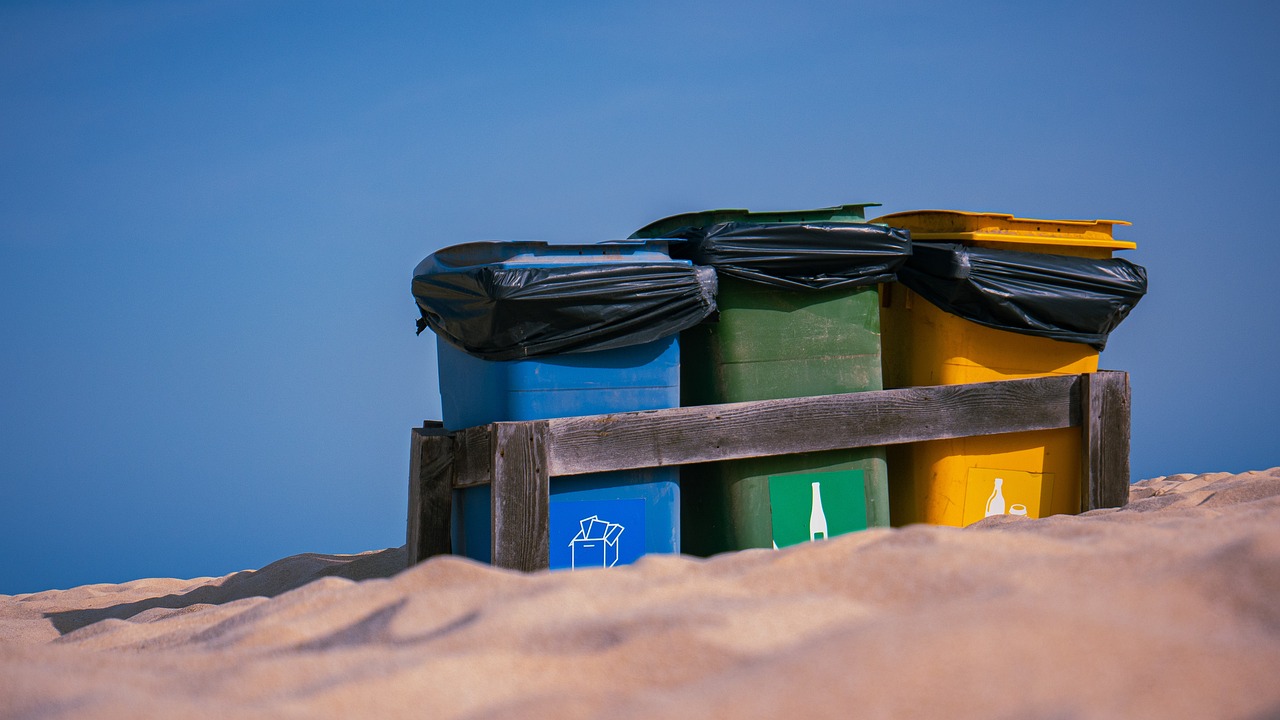The Environmental Impact of Single-Use Masks and Gloves
The COVID-19 pandemic has reshaped our world in countless ways, and one of the most visible changes has been the overwhelming use of single-use personal protective equipment (PPE) like masks and gloves. While these items have played a critical role in protecting public health, their environmental impact is becoming increasingly concerning. As we navigate the ongoing challenges of the pandemic, it's crucial to consider how our reliance on disposable PPE contributes to pollution and waste management issues.
Every day, millions of people around the globe don single-use masks and gloves, often without a second thought about where these items end up after use. The convenience of disposable PPE comes at a significant ecological cost. These items are typically made from synthetic materials, primarily plastics, which take hundreds of years to decompose. As a result, they are not just a temporary solution to a public health crisis; they are a long-term environmental problem that we must address.
In this article, we will explore the various dimensions of the environmental impact of single-use masks and gloves. From the materials used in their production to their contribution to plastic pollution, we will delve into the challenges posed by these everyday items. Furthermore, we will examine potential solutions, including biodegradable alternatives and improved recycling initiatives, to help mitigate their environmental footprint.
As we embark on this journey of understanding, let’s remember that every small action counts. By making informed choices about our PPE usage and disposal, we can contribute to a healthier planet for future generations. So, let’s dive in and uncover the hidden costs of our disposable habits!

The Rise of Single-Use PPE
The COVID-19 pandemic has reshaped our world in countless ways, and one of the most visible changes has been the dramatic rise in the use of single-use personal protective equipment (PPE). As the virus spread, the demand for protective gear soared, leading to an unprecedented reliance on disposable masks, gloves, and face shields. But have you ever stopped to think about the environmental implications of this surge? It’s a bit like trying to put out a fire with gasoline—while PPE is essential for protecting our health, the resulting environmental impact is proving to be a significant challenge.
Before the pandemic, many of us might have rarely thought about wearing masks or gloves in our daily lives. However, as the crisis unfolded, these items became essential, not just for healthcare workers but for everyone. The urgency to protect ourselves and others led to a massive increase in production and consumption of single-use PPE. According to some estimates, billions of masks and gloves have been used globally, leading to a staggering amount of waste. The sheer volume of these items is overwhelming; in fact, it’s estimated that around 129 billion face masks and 65 billion gloves are used each month worldwide. Just imagine the mountains of waste piling up!
But why are single-use options so prevalent? The answer lies in their convenience and perceived safety. Single-use PPE is designed to be thrown away after a single use, which means it eliminates the need for cleaning and sanitizing. This aspect is crucial in a pandemic situation where the risk of contamination is high. However, this convenience comes at a steep cost to our environment. Many of these items are made from plastics that take hundreds of years to decompose, and when they are discarded improperly, they contribute to the growing crisis of plastic pollution.
Moreover, the rapid increase in demand for single-use PPE has outpaced the development of effective waste management solutions. Many communities were caught off guard, lacking the infrastructure to handle such a sudden influx of waste. This has resulted in masks and gloves littering streets, parks, and beaches, creating a visual blight and posing risks to wildlife. It’s a harsh reminder that while we were focused on protecting our health, we inadvertently created a new set of environmental challenges.
As we navigate this new reality, it’s essential to consider not just how we can protect ourselves from viruses, but also how we can do so in a way that minimizes our environmental footprint. The rise of single-use PPE has sparked conversations about sustainability in healthcare and beyond. Can we find a balance between safety and environmental responsibility? The answer lies in innovation and a collective effort to rethink our approach to personal protective equipment.
In conclusion, the rise of single-use PPE during the pandemic has undoubtedly saved lives, but it has also led to a surge in environmental issues that cannot be ignored. As we move forward, it’s crucial to explore sustainable alternatives and develop effective waste management strategies to mitigate the impact of these necessary items on our planet.

The materials used in single-use masks and gloves are crucial to understanding their environmental impact. Most of these items are made from synthetic materials, primarily polypropylene, a type of plastic that is lightweight yet durable. While these materials serve their purpose effectively in protecting against pathogens, they also pose significant challenges when it comes to disposal. For instance, a typical surgical mask can take up to 450 years to decompose in a landfill, contributing to the growing problem of waste accumulation.
Additionally, many disposable gloves are made from latex or vinyl. While latex is a natural product, its production involves various chemicals that can be harmful to the environment. Vinyl gloves, on the other hand, are made from polyvinyl chloride (PVC), which is not only non-biodegradable but also releases toxic compounds during its production and disposal. The combination of these materials leads to a significant increase in plastic waste, which is often improperly disposed of, ending up in landfills and oceans.
It's essential to recognize that not all materials are created equal. Here’s a quick breakdown of the common materials used in single-use PPE:
| Material | Type | Environmental Impact |
|---|---|---|
| Polypropylene | Plastic | Non-biodegradable, takes 450 years to decompose |
| Latex | Natural Rubber | Biodegradable but involves harmful chemicals in production |
| Vinyl (PVC) | Plastic | Non-biodegradable, toxic during production and disposal |
Understanding these materials is vital for addressing the environmental challenges posed by single-use PPE. As consumers, we can make informed choices about the products we use and advocate for alternatives that are safer for both our health and the planet. The conversation around sustainable PPE is growing, and it's crucial for us to engage in it actively.
In light of these challenges, many companies and researchers are exploring innovative alternatives to conventional materials. For example, some manufacturers are developing masks made from biodegradable plastics or even plant-based fibers. These options not only offer the necessary protection but also break down more quickly in the environment, significantly reducing their ecological footprint.
In conclusion, while single-use masks and gloves provide critical protection, their materials can have a lasting negative impact on our environment. By understanding what these items are made of, we can better advocate for sustainable practices and support the development of eco-friendly alternatives.

The surge in the use of single-use personal protective equipment (PPE) during the COVID-19 pandemic has led to a staggering increase in plastic pollution. Every day, millions of masks and gloves are discarded, creating a mountain of waste that our planet struggles to manage. It's almost like a tidal wave of plastic, crashing onto our shores and infiltrating our ecosystems. Have you ever wondered where all those discarded masks and gloves end up? Unfortunately, many of them find their way into our oceans and landscapes, posing a severe threat to wildlife and the environment.
To grasp the magnitude of this issue, consider the fact that a single disposable mask can take up to 450 years to decompose. That's longer than most of us will be around! As these items break down, they release microplastics into the environment, which can be ingested by marine life and enter the food chain. This not only affects the health of marine creatures but also poses risks to human health when we consume seafood contaminated with plastic. It's a vicious cycle that we need to break.
In addition to the long decomposition time, the sheer volume of PPE waste generated is alarming. According to recent studies, it is estimated that around 129 billion masks and 65 billion gloves are used globally each month. To put that into perspective, if we stacked all these masks, they would circle the Earth over 1.5 times! This overwhelming amount of waste highlights the urgent need for effective waste management solutions.
Moreover, the problem is compounded by the fact that many of these single-use items are not disposed of properly. Instead of being thrown into designated waste bins, they often end up littering our streets, parks, and beaches. This litter not only harms the aesthetic beauty of our surroundings but also attracts pests and creates additional environmental hazards.
So, what can we do about it? The first step is to raise awareness about the impact of plastic pollution from PPE. Understanding the consequences of our actions can motivate individuals and communities to adopt more sustainable practices. Here are some actions we can take:
- Proper Disposal: Always dispose of masks and gloves in designated waste bins to prevent them from becoming litter.
- Advocacy: Support policies that promote the use of biodegradable PPE.
- Education: Participate in community clean-up events to help remove existing litter from our environment.
Ultimately, tackling the plastic pollution crisis caused by single-use PPE requires a collective effort. By making conscious choices and advocating for change, we can help protect our planet for future generations. Together, we can turn the tide on this growing environmental challenge.
Q1: What are the environmental impacts of single-use PPE?
A1: Single-use PPE contributes significantly to plastic pollution, taking hundreds of years to decompose and releasing harmful microplastics into the environment.
Q2: How can I properly dispose of masks and gloves?
A2: Always dispose of masks and gloves in designated waste bins. Some communities may have specific guidelines for disposing of hazardous waste, so it's essential to check local regulations.
Q3: Are there biodegradable alternatives to single-use PPE?
A3: Yes, there are biodegradable options available that can significantly reduce environmental harm while still providing necessary protection.
Q4: How can I help reduce plastic pollution from PPE?
A4: You can help by properly disposing of PPE, participating in clean-up efforts, and advocating for sustainable alternatives in your community.

As the world grapples with the overwhelming environmental impact of single-use personal protective equipment (PPE), the search for biodegradable alternatives has gained significant momentum. These alternatives not only aim to reduce pollution but also provide a sustainable solution that aligns with our growing environmental consciousness. Imagine a world where the masks and gloves we use to protect ourselves can break down naturally, leaving no harmful trace behind. Sounds like a dream, right? Well, it's becoming a reality!
Many companies are now innovating with materials that are not only effective in providing protection but also biodegradable. For instance, some masks are made from natural fibers such as cotton, hemp, or even biodegradable polymers derived from plants. These materials can decompose within a few months under the right conditions, significantly reducing their environmental footprint compared to traditional plastic-based PPE.
Moreover, biodegradable gloves are emerging on the market, crafted from materials such as starch-based polymers or nitrile that are designed to break down more easily than conventional latex or vinyl gloves. These gloves can serve the same purpose in medical and food service settings while offering a more eco-friendly disposal option. Think of it as swapping out your regular plastic bag for a compostable one; it’s a small change that can lead to a big impact!
However, it’s essential to note that while biodegradable PPE is a step in the right direction, it still requires proper disposal methods to ensure that they break down as intended. If these items end up in a landfill, they may not decompose efficiently due to the lack of oxygen and sunlight. Therefore, it’s crucial to educate users on how to dispose of biodegradable PPE correctly. This brings us to a vital point: public awareness and education are key to making biodegradable alternatives a viable option.
In addition to individual choices, businesses and institutions can play a significant role in promoting biodegradable PPE. By adopting these alternatives, they can set a precedent and encourage others to follow suit. Imagine hospitals using biodegradable gloves in their operations or schools providing biodegradable masks to students. This collective effort can lead to a significant reduction in plastic waste.
In conclusion, the shift towards biodegradable alternatives for single-use masks and gloves is not just a trend; it's a necessary evolution in our approach to personal safety and environmental responsibility. As we navigate through these challenging times, let’s embrace these innovative solutions and work together to create a cleaner, healthier planet for future generations.
- What are biodegradable masks made of? Biodegradable masks are typically made from natural fibers such as cotton, hemp, or biodegradable polymers derived from plants.
- How long do biodegradable PPE take to decompose? Under optimal conditions, biodegradable PPE can decompose within a few months, unlike traditional plastic which can take hundreds of years.
- Can biodegradable PPE be recycled? While some biodegradable materials can be recycled, it is essential to check local recycling guidelines to ensure proper disposal.
- Are biodegradable masks as effective as traditional masks? Yes, biodegradable masks can provide similar levels of protection as traditional masks, depending on their design and materials used.

The surge in the use of single-use personal protective equipment (PPE) during the COVID-19 pandemic has brought to light significant recycling challenges that we must address. While the importance of protecting public health cannot be overstated, the environmental implications of disposable masks and gloves are alarming. These items, primarily made from plastics, often end up in landfills, oceans, and other ecosystems, where they can take hundreds of years to decompose. Unfortunately, the conventional recycling systems are not equipped to handle these materials effectively.
One of the primary challenges in recycling single-use PPE is the contamination factor. Masks and gloves are often contaminated with biological materials, which makes them hazardous waste rather than recyclable materials. This contamination creates a dilemma for recycling facilities, as they must prioritize health and safety over recycling efforts. As a result, many recycling programs do not accept these items, leading to a significant increase in waste. Additionally, the sheer volume of PPE being discarded poses logistical challenges for waste management systems, which are already stretched thin.
Moreover, the materials used in single-use PPE are not easily recyclable. Most masks are made from a combination of polypropylene, a type of plastic, along with other materials like elastic bands and nose wires. This mixture complicates the recycling process, as separating these components is labor-intensive and costly. For instance, a typical surgical mask consists of multiple layers, each with different properties, making it difficult to recycle as a single unit. Without specialized facilities and processes in place, these materials often end up in landfills.
To illustrate the recycling challenges, consider the following table that summarizes the key issues:
| Challenge | Description |
|---|---|
| Contamination | Biological materials make PPE hazardous waste, complicating recycling efforts. |
| Material Composition | Multiple layers and materials in PPE hinder effective recycling. |
| Lack of Facilities | Most recycling plants are not equipped to handle single-use PPE. |
| Logistical Issues | The high volume of waste generated strains existing waste management systems. |
Despite these challenges, there is hope on the horizon. Innovative approaches are being developed to tackle the recycling of single-use PPE. For example, some companies are exploring the use of chemical recycling methods that can break down plastics into their original monomers, allowing for the creation of new products. Furthermore, public-private partnerships can facilitate the establishment of dedicated recycling facilities that specialize in handling PPE waste. These initiatives could pave the way for a more sustainable future, where the environmental impact of PPE is minimized while still ensuring public safety.
- Can single-use masks and gloves be recycled?
Generally, single-use PPE is not recyclable due to contamination and material composition challenges. - What are the alternatives to single-use PPE?
Consider using reusable masks and gloves made from sustainable materials to reduce environmental impact. - How can I dispose of single-use PPE properly?
Check local guidelines for hazardous waste disposal to ensure safe and responsible disposal of PPE.

The proliferation of single-use masks and gloves has become a pressing environmental issue, particularly concerning our oceans and marine life. As these items are discarded improperly, they contribute to a growing tide of plastic pollution that threatens the delicate balance of marine ecosystems. Imagine walking along a beach, only to find it littered with colorful masks and gloves instead of pristine sand and surf. This scene is becoming all too common and raises a crucial question: what happens to marine life when these items invade their habitats?
When single-use PPE enters our oceans, it can break down into smaller microplastics, which are then ingested by marine animals. Fish, seabirds, and even larger mammals mistake these tiny particles for food, leading to severe health complications. The ingestion of plastic can cause blockages, malnutrition, and even death. Additionally, toxins from the plastics can accumulate in the bodies of these animals, entering the food chain and ultimately affecting human health as well. It's a vicious cycle that poses a significant threat to biodiversity.
Moreover, masks and gloves can entangle marine creatures, leading to injury or death. Sea turtles, for instance, are known to mistake plastic for jellyfish, one of their favorite foods. When they consume a mask instead, it can lead to fatal consequences. Similarly, seabirds can become ensnared in discarded gloves, limiting their ability to fly and hunt for food. The visual impact of these items in the ocean is alarming, but the hidden dangers they pose to marine life are even more concerning.
In light of these challenges, it is vital to explore solutions that can mitigate the impact of single-use PPE on marine ecosystems. Here are some potential strategies:
- Public Education: Increasing awareness about the proper disposal of PPE can significantly reduce littering.
- Community Clean-Up Initiatives: Organizing beach clean-ups can help remove existing waste and prevent further pollution.
- Innovative Design: Developing PPE that is more easily biodegradable or recyclable can lessen the burden on our oceans.
Ultimately, protecting marine life from the detrimental effects of single-use masks and gloves requires collective action. By understanding the link between our choices and the health of our oceans, we can work towards a more sustainable future. The ocean is not just a vast body of water; it is a living ecosystem that deserves our respect and protection. Let’s make conscious decisions today to ensure that future generations can enjoy the beauty of marine life without the shadow of plastic pollution looming over it.
Q1: How long does it take for a single-use mask to decompose in the ocean?
A: A single-use mask can take hundreds of years to decompose in the ocean, contributing to long-term pollution.
Q2: What are the best practices for disposing of single-use PPE?
A: The best practice is to place used masks and gloves in a sealed plastic bag and dispose of them in the trash to prevent them from entering the environment.
Q3: Are there any biodegradable alternatives to single-use PPE?
A: Yes, there are biodegradable options available that can significantly reduce environmental impact while still providing necessary protection.

The growing concern over the environmental impact of single-use personal protective equipment (PPE) has highlighted the urgent need for effective waste management solutions. As we navigate through a world increasingly reliant on disposable masks and gloves, it's crucial to implement strategies that minimize their ecological footprint. Traditional waste disposal methods often fall short when it comes to handling the sheer volume of these items, leading to overflowing landfills and polluted landscapes. But what can be done to tackle this pressing issue? Let's explore some innovative approaches that can make a significant difference.
One of the first steps towards effective waste management is improving public awareness. Educating individuals about the proper disposal methods for single-use PPE is essential. Many people are unaware that these items should not be thrown into regular recycling bins or general waste. Instead, specialized disposal systems need to be established. For instance, designated collection points for used masks and gloves can be set up in public areas, making it easier for individuals to dispose of these items responsibly. This initiative can be complemented by public service campaigns that highlight the importance of proper disposal and the environmental consequences of neglecting it.
Moreover, collaboration between manufacturers, governments, and waste management companies is vital. By working together, stakeholders can develop comprehensive waste management programs that include the collection, sorting, and processing of single-use PPE. For example, some companies are already exploring the idea of creating dedicated recycling facilities that can handle these materials more effectively. These facilities could employ advanced technologies to sort and process PPE, transforming them into reusable materials or energy. This not only reduces the amount of waste sent to landfills but also creates a circular economy for PPE.
Another promising solution lies in the development of biodegradable alternatives. If we can replace traditional single-use masks and gloves with materials that decompose naturally, we can significantly reduce the burden on waste management systems. Innovations in biodegradable polymers and sustainable materials are paving the way for safer alternatives that maintain the necessary protective qualities without the long-lasting environmental impact. Imagine a world where your mask could break down in just a few months instead of lingering in landfills for centuries!
Additionally, implementing stricter regulations regarding the production and disposal of single-use PPE can catalyze change. Governments can introduce policies that mandate the use of environmentally friendly materials in the manufacturing process. They can also incentivize companies to adopt better waste management practices through tax breaks or grants. By creating a framework that encourages sustainability, we can drive the industry towards more responsible practices.
Finally, community involvement plays a crucial role in waste management solutions. Grassroots initiatives can mobilize volunteers to organize cleanup drives in local parks and beaches, focusing on removing discarded PPE from the environment. These efforts not only help to clean up our surroundings but also foster a sense of community responsibility towards environmental stewardship.
In conclusion, addressing the environmental impact of single-use PPE requires a multifaceted approach. By enhancing public awareness, fostering collaboration, exploring biodegradable alternatives, implementing strict regulations, and encouraging community involvement, we can develop effective waste management solutions. Together, we can pave the way for a cleaner, more sustainable future.
- What should I do with used masks and gloves? It's best to dispose of them in designated waste bins specifically for hazardous waste or follow local guidelines for disposal.
- Are there biodegradable masks and gloves available? Yes, many companies are now offering biodegradable options made from sustainable materials.
- How can I help reduce the impact of single-use PPE? You can help by properly disposing of PPE, supporting sustainable alternatives, and participating in community cleanup efforts.

In a world increasingly plagued by environmental challenges, public awareness campaigns have emerged as a crucial tool in combating the negative impacts of single-use personal protective equipment (PPE) like masks and gloves. These campaigns aim to inform and educate individuals about the ecological consequences of their everyday choices, particularly in the wake of the COVID-19 pandemic, which saw a dramatic rise in the use of disposable PPE. By spreading knowledge, these initiatives empower people to make informed decisions that can lead to more sustainable practices in their daily lives.
One of the most effective strategies employed by these campaigns is the use of social media, which allows for rapid dissemination of information. Platforms like Instagram, Facebook, and Twitter have become battlegrounds for environmental advocates to raise awareness about the detrimental effects of single-use masks and gloves on our planet. For instance, eye-catching graphics and impactful videos can illustrate how these items contribute to plastic pollution, often ending up in our oceans and harming marine life. By using relatable content, these campaigns can resonate with a broader audience, making the issue more personal and urgent.
Moreover, many campaigns focus on community engagement, encouraging local groups to participate in cleanup drives or recycling initiatives. This hands-on approach not only raises awareness but also fosters a sense of community responsibility. When people come together to tackle a common issue, it creates a ripple effect; individuals are more likely to adopt sustainable practices in their own lives after witnessing the collective effort of their peers. Campaigns often utilize local events, workshops, and educational programs to further this goal, making the message even more impactful.
To illustrate the effectiveness of public awareness campaigns, consider the following statistics from various initiatives:
| Campaign Name | Year Launched | Engagement Rate (%) | Plastic Waste Reduced (tons) |
|---|---|---|---|
| Clean Oceans Project | 2020 | 75 | 500 |
| Eco-Friendly PPE Initiative | 2021 | 60 | 300 |
| Mask Recycling Campaign | 2022 | 80 | 200 |
These numbers reflect the tangible impact that awareness campaigns can have on reducing waste and promoting sustainable behavior. As we move forward, it is essential to continue supporting these initiatives and encouraging individuals to adopt more environmentally friendly practices. From choosing reusable masks to participating in local cleanup efforts, every small action counts. Ultimately, the goal is to create a culture where sustainability is the norm, not the exception.
In conclusion, public awareness campaigns play a pivotal role in addressing the environmental impact of single-use PPE. By educating the public, fostering community engagement, and utilizing modern communication tools, these campaigns can inspire change and lead to a more sustainable future. It's time for all of us to become advocates for the planet and take responsibility for our choices, one mask at a time.

As the environmental impact of single-use personal protective equipment (PPE) becomes increasingly evident, it is crucial for policymakers to take decisive action. The rise in disposable masks and gloves during the COVID-19 pandemic has not only highlighted the importance of health and safety but has also shed light on the urgent need for sustainable practices. Implementing effective policies and regulations can significantly mitigate the adverse effects of these items on our environment.
One of the first steps that governments can take is to establish regulations that promote the use of biodegradable alternatives to traditional plastic PPE. By providing incentives for manufacturers to develop and produce eco-friendly options, we can reduce the amount of plastic waste generated. For instance, creating a certification system for biodegradable PPE could encourage both producers and consumers to prioritize sustainability. Additionally, governments could impose stricter regulations on the disposal of single-use PPE, ensuring that these items are not discarded irresponsibly, which often leads to pollution in our oceans and landscapes.
Furthermore, public-private partnerships can play a pivotal role in enhancing recycling programs for single-use PPE. These collaborations can facilitate the development of specialized recycling facilities that are equipped to handle the unique materials found in masks and gloves. For example, a pilot program could be launched in major cities to collect and process used PPE, turning waste into valuable resources. This would not only reduce landfill waste but also create a circular economy around PPE production and disposal.
In addition to promoting biodegradable options and enhancing recycling efforts, it is essential to raise awareness among the public about the importance of responsible PPE disposal. Educational campaigns can inform individuals about the environmental impacts of improper disposal and encourage them to participate in community clean-up initiatives. By fostering a sense of responsibility and community engagement, we can collectively work towards reducing the ecological footprint of single-use PPE.
Lastly, international cooperation is vital in addressing the global challenge posed by single-use PPE. Countries can collaborate to establish global standards for PPE production, usage, and disposal. By sharing best practices and technologies, nations can work together to combat the pollution crisis more effectively. This could include agreements on reducing plastic usage and promoting sustainable materials in the production of PPE worldwide.
In summary, the need for policy and regulation changes is urgent. By focusing on biodegradable alternatives, enhancing recycling programs, raising public awareness, and fostering international cooperation, we can pave the way for a more sustainable future. The choices we make today will determine the health of our planet for generations to come.
- Why are single-use masks and gloves a problem for the environment?
Single-use masks and gloves contribute to plastic pollution, which harms wildlife and ecosystems when they end up in oceans and landscapes. - What are biodegradable alternatives to single-use PPE?
Biodegradable alternatives include masks and gloves made from materials that break down naturally, reducing long-term environmental impact. - How can I dispose of my single-use PPE responsibly?
Always follow local guidelines for disposal. Some areas may have specific bins for PPE, while others may recommend placing them in regular waste. - What can governments do to address the issue?
Governments can introduce regulations promoting biodegradable options, enhance recycling efforts, and raise public awareness about proper disposal methods.
Frequently Asked Questions
- What are single-use masks and gloves made of?
Single-use masks and gloves are typically made from various types of plastics, including polypropylene and polyethylene. These materials are chosen for their protective qualities but pose significant environmental challenges when disposed of improperly.
- How do single-use PPE contribute to plastic pollution?
Single-use PPE, such as masks and gloves, often end up in landfills, oceans, and other natural environments. When discarded carelessly, they can break down into microplastics, harming wildlife and disrupting ecosystems.
- Are there biodegradable alternatives to single-use PPE?
Yes! There are innovative biodegradable materials being developed for masks and gloves. These alternatives aim to reduce the environmental impact while still providing the necessary protection. Examples include masks made from plant-based materials that decompose more easily than traditional plastics.
- What challenges exist in recycling single-use PPE?
Recycling single-use PPE is complicated due to contamination and the mixed materials used in their production. Most recycling facilities are not equipped to handle these items, leading to them being sent to landfills instead.
- How do single-use masks and gloves affect marine life?
When single-use PPE ends up in oceans, it poses a significant threat to marine life. Animals can become entangled in the materials or mistake them for food, leading to injury or death. This disruption can have broader implications for marine biodiversity.
- What waste management solutions can help with the disposal of single-use PPE?
Effective waste management solutions include implementing designated disposal bins for PPE, developing specialized recycling programs, and encouraging the use of reusable alternatives. Public and governmental support is crucial for these initiatives to succeed.
- How can public awareness campaigns help reduce the impact of single-use PPE?
Public awareness campaigns play a vital role in educating people about the environmental consequences of single-use PPE. By promoting sustainable practices and alternatives, these campaigns can inspire individuals to make more eco-friendly choices.
- What policy changes could help mitigate the environmental impact of single-use PPE?
Potential policy changes include regulations that limit the production and use of single-use PPE, incentives for manufacturers to produce biodegradable options, and support for recycling programs. These measures can encourage a shift towards more sustainable practices.



















